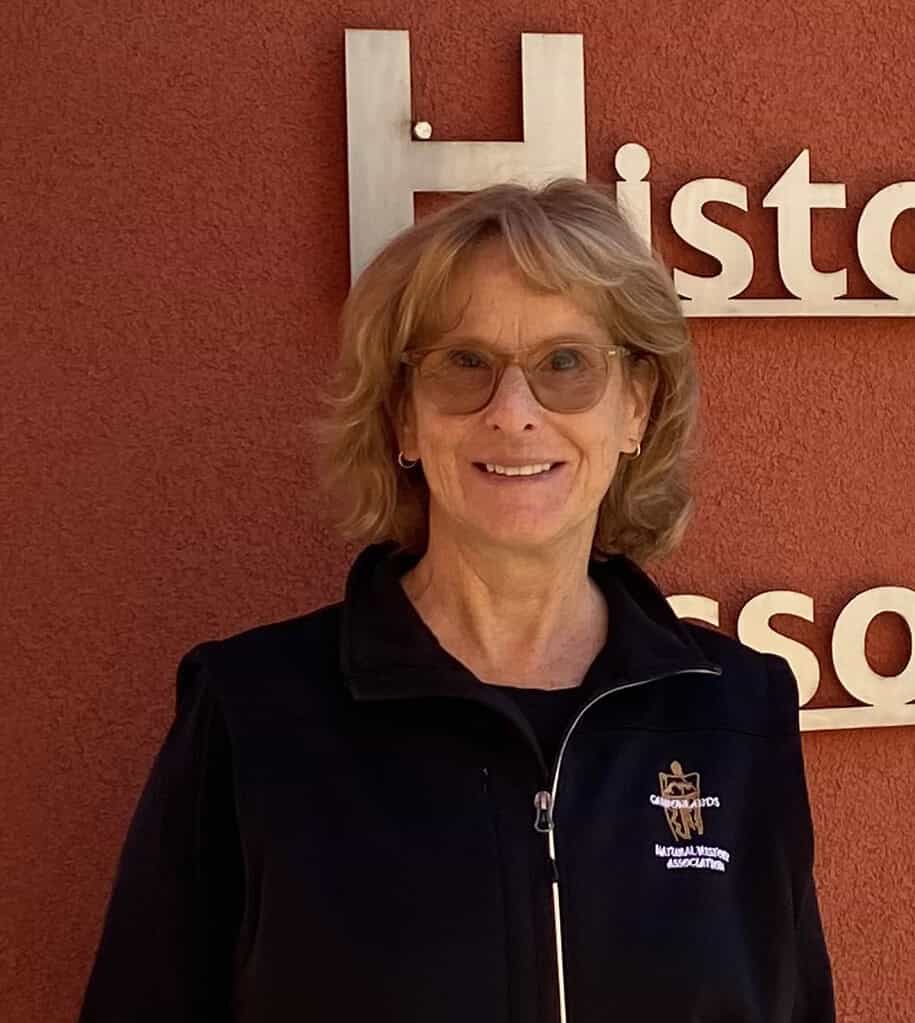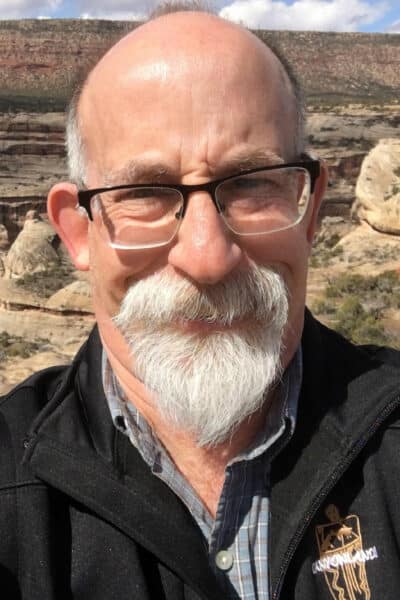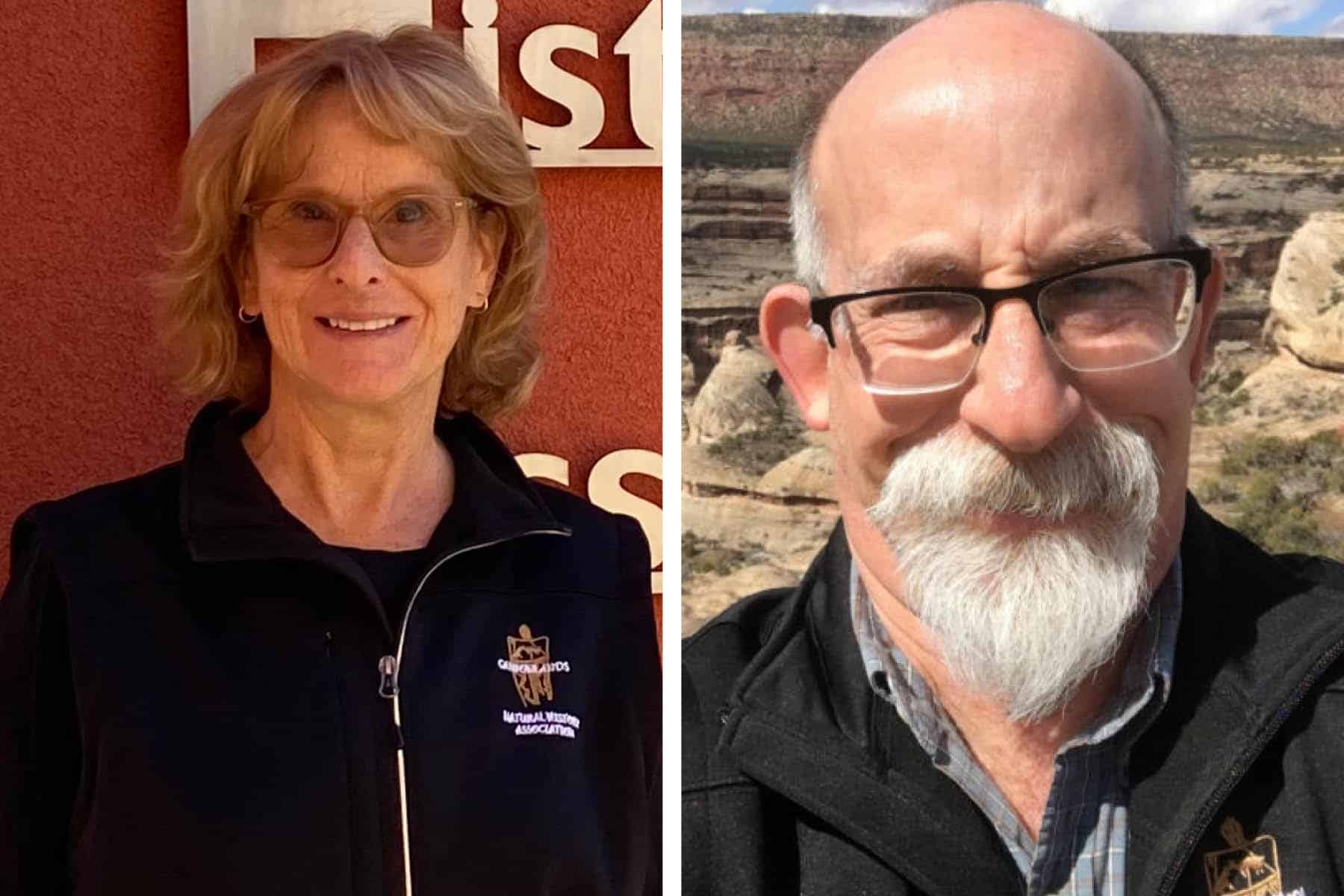Some information may be outdated.
Canyonlands Natural History Association to change leadership
The Canyonlands Natural History Association is a nonprofit that provides vital funds to local land management agencies such as the Bureau of Land Management, U.S. Forest Service, and National Park Service. Their work includes funding science projects through the Discovery Pool research grant, such as Mallory Lambert’s studies on the interactions of pikas and mountain goats, and Joel Berger’s research on how noise impacts bighorn sheep; and running the Moab Information Center. Since its inception, the nonprofit has donated more than $20 million to education and research efforts through land management agencies.
Roxanne Bierman, executive director, has been with the organization since 2016. She’s soon retiring, and Sam Wainer, previous operations manager at CNHA, will take over the position. Wainer has worked there since 1996.
“I’ve seen the organization operation grow over those almost 28 years now, and I’ve been involved in a lot of different aspects of the organization,” he said. “After being here for so long, this was something I wanted to do.”
Wainer said he’s excited to take over the role, which involves overseeing all operations and ensuring the nonprofit stays fiscally sound. We chatted with Bierman and Wainer about what’s next for CNHA.


MSN: What role does CNHA play in the community?
Bierman: I think we have a lot of impact on the community and largely because we partner with the BLM and the Forest Service. There’s a great deal of BLM land in this area. Every time we pay for a cultural survey, or projects—we’re looking at the Mill Creek area and how to make that a user-friendly situation that will protect the resource, and we assisted the Forest Service in re-seeding after the Pack Creek fire—those things we do for our federal partners directly affect the local community.
And also, we partner to run the Moab Information Center. I think that’s a huge contribution—we’ve been doing that since its inception in 1993.
Wainer: The Discovery Pool granting program was founded really to be able to help support partner agencies. Over the last few years, we’ve also partnered with Science Moab—last winter we sponsored Science Moab on Tap, and we’re sponsoring it again this year. We try to find creative ways that we can partner within the community: we host a Public Lands Day event every year in September at the Moab Information Center, and we’ve been trying to grow that. We’ve invited more partners like Science Moab, Grand County Active Transportation and Trails, the Friends of Arches and Canyonlands was there, and the community artist [Community Artist in the Parks] was there.
Bierman: I feel really strongly that the better we can help the federal partners here, the healthier the community is going to be. A big draw here is our public lands. And they struggle, like many other organizations, with staffing, with budget cuts, with all kinds of issues like that. So if we can maintain strong organizations within our public lands, I think that we need to take care of them in order to thrive as a community. We’re somewhat dependent on the fact that we need our federal folks to do a good job managing their lands, so that we remain a huge draw for the country and everyone to come and visit here.
MSN: Building off of that, why do you think this work is important?
Bierman: It’s extremely important that public lands remain healthy and well-managed, and it’s difficult for them [federal agencies] anymore to do that without partnerships. We’re one of the bigger partners that they have in this area, and we provide a lot of funding. They have the expertise to do what needs to be done, and sometimes they just need funds in order to make that happen.
Wainer: I would agree. I love the area, and like I said, I’ve lived here for a long time, I’ve seen a lot of changes to the area. I’ve recreated on public lands for a long, long time. I enjoy being able to have meaningful work with an organization that is a good company to work for—I feel like the work that we do on a daily basis does have an impact on people’s lives.
MSN: What other projects are you working on?
Bierman: One of the things that we started to dive into this year was housing. As with everyone else in the community, and many communities like ours across the country that have national parks and gateway communities, it’s difficult for people to find an affordable place to live. One of the reasons our partners struggle is not that they can’t attract staff, but that if they do try to bring somebody in, that person can’t find anywhere to live.
So we made our first foray into employee housing: we bought seven employee housing units. We are helping all three of our federal partners with their housing needs. These are meant for a soft landing for permanent employees who come in, to give them a few months to maybe try and find a longterm place. We have a property manager, we are furnishing these places, and we’re paying a lot of the expenses—we’re not trying to make any money off of this, we are strictly trying to provide that service so that our partners can do their work. Bringing in employees is essential.
Wainer: One of my goals—and it’s difficult—is to somehow help our partners to be able to build their own housing, on their land. It’s a goal, and it’s a difficult one, because there are a lot of guidelines and loopholes. We never wanted to be landlords, but we have to be.
Bierman: A lot of what we provide funds for is aid like free publications and seasonal staffing and volunteers in the Student Conservation Association. But what’s more interesting to us is some of the new and innovative things our partners come up with: for example, we’re supporting an e-bike program for the national parks, and we’ve become involved in specialized training like search and rescue.
This interview has been edited for length and clarity.
Appreciate the coverage? Help keep local news alive.
Chip in to support the Moab Sun News.





